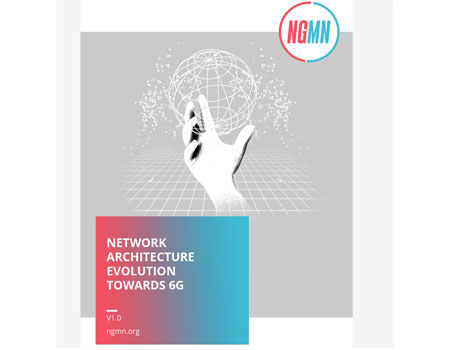By WG SA5 - Authors Hassan Al-Kanani, NEC and Yizhi Yao, Intel
More and more complex use cases and advanced services coupled with rising performance expectations by end users in terms of e.g., larger data buckets, higher speed, lower latency, robust connectivity as well as higher energy efficiency, these all continue to form a new era of challenges for the deployment, operation, and optimization of 5G and future generation mobile networks and services. To deliver upon these expectations and keep up with the evolving challenges, the OAM system would require some fundamental enhancements to support the advanced use cases and services by bringing intelligence and enable full automation to achieve the near zero-touch network and service management and orchestration.
Starting from Rel-15/Rel-16 timeframe the 3GPP SA WG5 has been working quite intensively on developing specifications for the Management Data Analytics (MDA) feature. Basic concepts and definitions were developed initially and included into Rel-15 specifications, which lead to the initiation of a comprehensive Rel-17 study followed by a successfully completed Rel-17 normative work. The MDA specification developed by the normative phase addresses a wide range of use cases (capabilities), relevant requirements, and solutions with analytics input (analytics enabling data) and analytics output (report), as well as the MDA Management Services (MnSs) to support the interactions between the service consumer and producer for MDA request and reporting. The specification also defines MDA functionality and service framework, MDA process, MDA role in management loop as well as other management aspects of MDA. Figure 1 illustrates a high-level overview of the MDA functionality.

Figure 1: Overview of the MDA functionality
The MDA utilizes the collection of current and historical management and network data (including e.g., communication service, slicing, management and/or network functions related data) to perform analytics that could further enrich and enhance management capabilities to achieve optimum network performance and service assurance.
MDA General Framework
Starting from Rel-15 onwards SA5 has been embracing the Service Based Management Architecture (SBMA) for their specifications where the Management Services (MnSs) are defined by the service components. According to the SBMA, a Management Service (MnS) is produced by an MnS producer and consumed by one or more authorized MnS consumer(s).
The MDA, in the context of the 3GPP-defined Service Based Management Architecture (SBMA) offers a management service, usually referred to as MDA MnS or MDAS, allowing any authorized consumer (MDA MnS consumer) to request and receive analytics as illustrated in Figure 2.

Figure 2: MDA general framework
A management function, i.e., the Management Data Analytics Function (MDAF) may play the role of MDA MnS producer by leveraging current and historical data from the network including data related to RAN, CN, TN, OAM system as well as data from external entities including non-3GPP management system (e.g., MANO, verticals). The data includes e.g.,
- Performance Measurements,
- Trace data including MDA/RF/RCEF,
- QoE and service experience data,
- Analytics data from CN NWDAF,
- Alarm information and notifications,
- Configuration Management information and notifications,
- UE location information,
- MDA reports from other MDA MnS producers,
- Management data from non-3GPP systems.
Analytics input data (i.e., enabling data) are specified per MDA capability. In other words, they are capability specific. However, the list of input data is not restrictive to the specified list and can include more or less data elements, in fact the input data can also include a set of proprietary data. This would facilitate deployments while also allowing vendor differentiation. Analytics outputs produced by the MDAF that plays the role of MDA MnS producer, are made available to the authorized consumer(s), which can be, but are not limited to other management functions, network functions/entities, NWDAF, SON functions, optimization tools, and human operators.
The MDA framework allows the design around an efficient internal business logics and proprietary algorithms of varying complexity (e.g., with or without adopting AI/ML) for vendor differentiation, yet all this can still be done without compromising the standardised interface required for multi-vendor deployments (integration). This is especially complemented by the MDA ability to consume both standardised and vendor proprietary analytics input data depending on the capability/use case.
Management Data Analytics Function (MDAF) may act as 3GPP domain-specific (e.g., RAN or CN) or as a 3GPP cross-domain MDA MnS producer allowing MDAS to be produced and consumed at and cross different levels (domains).
MDA can be optionally implemented using the AI/ML technology to conduct its inference (analytics).
MDA supported capabilities
The 3GPP Rel-17 specifications support a wide range of MDA capabilities (MDA types) grouped below under 6 categories:
- Coverage related analytics
- Coverage problem analysis,
- Slice coverage analysis,
- Paging optimization analysis,
- SLS analysis
- Service experience analysis,
- Network slice throughput analysis,
- Network slice traffic prediction,
- E2E latency analysis,
- Network slice load analysis,
- MDA assisted fault management
- Failure prediction,
- MDA assisted Energy Saving
- Energy saving analysis,
- MDA assisted mobility management
- Mobility performance analysis,
- Handover optimization analysis,
- Inter-gNB beam selection optimization,
- MDA assisted critical maintenance management
- RAN Node Software Upgrade.
The MDA capabilities may also support analytics of a specific set of data for predictions or statistics based on certain PMs, KPIs, trace data, QoE or other type of data.
The MDA capabilities are specified, each with the corresponding required minimum set of specific analytics inputs (i.e., enabling data) along with the analytics output information elements (analytics report). The MDA MnS consumer can request the producer to provide MDA output for a list of specified MDA type(s) of analytics, i.e., “MDA type” which corresponds to an MDA capability, that supports analytics for a set of data for a specific use case.
Following a successful MDA request, any authorized MDA MnS consumer can obtain or receive MDA output (reports) from the corresponding MDA MnS producer. The MDA MnS consumer can control the MDA reporting by modifying the attributes related to the MDA request at any point in time including, e.g., method of reporting. MDA output represented by the MDA report can be reported by file, streaming and notification.
|
Release |
UID |
Work item title |
Report/ Specification |
Work item document |
Acronym |
|
R-17 |
850028 |
Study on enhancement of Management Data Analytics Service |
SP-190930 |
FS_eMDAS |
|
|
R-17 |
910027 |
Enhancements of Management Data Analytics |
SP-210132 |
eMDAS |
|
|
Re-17 |
760066 |
Management and orchestration of 5G networks and network slicing |
SP-180816 |
NETSLICE |


 Technology
Technology




